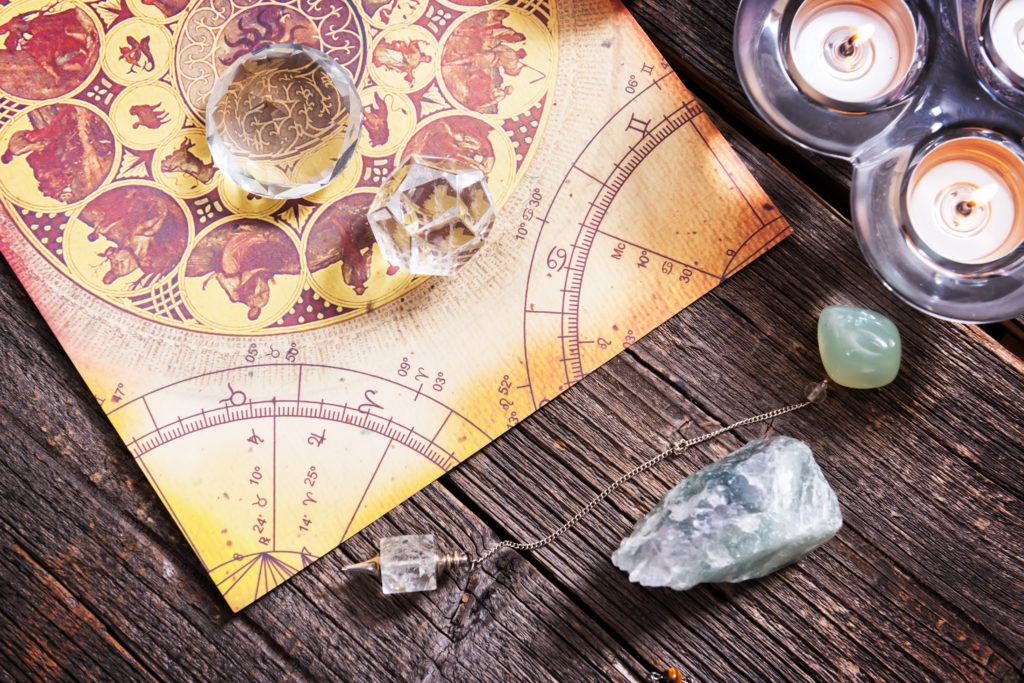Tarot Therapy- Do the cards help?
- Published: Monday, February 5th 2018
- in Living Well

Tarot cards are ingrained into popular culture, to the extent that most of us will be familiar with them even if we don’t quite understand how the deck is comprised. When a supporting character in the horror film we’re watching draws a death card, we understand that their prospects aren’t stellar.
In the real world, many shy away from the tarot, thanks partly to its association with the occult, and partly thanks to its perceived silliness. After all, aren’t the magical, predictive properties of the tarot deck on around the same level as those of crystal balls, voodoo dolls and bone fragments?
With that said, tarot cards aren’t without their uses. For one thing, they’re fun. For another, they have a therapeutic use that psychologists (including, famously, Carl Jung) have been exploring for decades. This use of the deck is, a little unimaginatively, called Tarot Therapy. But why would a therapist whip out their tarot deck when more traditional methods are available?
The precursors of tarot therapy
It’s difficult to understand what a person is really thinking. If they’re especially articulate, then they might be able to tell you. But what if they don’t know what they’re thinking? And what if they have a mistaken impression of their own thoughts?
It’s here that we encounter the limits of conversation as a therapeutic tool. That’s why some psychologists bring to the table ambiguous images, onto which patients can project their own underlying, unconscious thoughts and feelings. If one person sees a grave while another sees a lollipop, then we can make a few assumptions about their state of mind.
Perhaps the most famous of these tests is the Rorschach Test, a series of ink blots devised to treat patients with schizophrenia. More broadly, it’s used to shine a light on the way that people perceive the world around them – making the object of their attention vague and cloudy allows those perceptions to take centre stage.
Another example of this sort of thing is the Thematic Apperception Test, which was developed by Harvard psychologists in the 1930s. Again, it uses ambiguous pictures – though the images this time do actually represent something. Subjects are then asked to tell a story based on their perceptions of the image.
What is tarot therapy?
Tarot therapy is another take on this formula. It offers something slightly different, but the objective is the same. The idea is to persuade patients to reveal the contents of their subconscious. Let’s consider some of the reasons we might explore this practice.
An image speaks a thousand words
As we’ve mentioned, it can be difficult to articulate certain thoughts and feelings even relatively mundane ones. What’s more, some topics might be traumatic, and therefore difficult to talk about. It might be easy to describe how someone was knocked over by a bus in town. If the person was a close friend or relative, the emotional weight of the accident might impede the conversation.
As the saying goes, a picture is worth a thousand words, and so the image on a tarot card can provide the nudge people need to address a difficult topic, offering comfort and familiarity, and prompting them to open up.
The tarot makes abstract concepts concrete
On a related note, the average tarot deck possesses metaphorical imagery and distills abstract concepts into concrete things and people. It might be difficult to draw or see ‘change’, or ‘luck’, but the same is not true of Death riding his pale horse, or the Wheel of Fortune.
This is part of the design of the deck itself. Picture cards are designed to be taken literally. If the patient doesn’t understand the traditional meanings behind the cards, then so much the better; they’ll be able to project their own meanings onto the images without orthodoxy getting in the way.
Tarot as an agent of empowerment
Traditionally, the person performing the reading will draw the cards and explain their meaning to the client. In a psychotherapeutic context, it adjusts. The patient can take the cards themselves and select those that stand out the most to them. This way, they maintain control over the process and may take a more positive view of it.
The tarot provides a new perspective
The random nature of dealt cards can help broaden perspectives. A set of dealt cards can provide both patient and clinician with an entirely new way of looking at a given situation.
So is Tarot Therapy Worth It?
It’s a neutral surface onto which the patient can project their innermost thoughts and feelings. No mysticism or scented candle is required.
While you might imagine drafting the tarot deck into a psychotherapy session to be a gimmick, it has proven effective. The idea is to grapple with abstract daily ideas that we wrestle with and provide a tool to examine one’s own life. Given the chance, it can help to overcome psychological obstacles that many modern techniques might fail to surmount!



